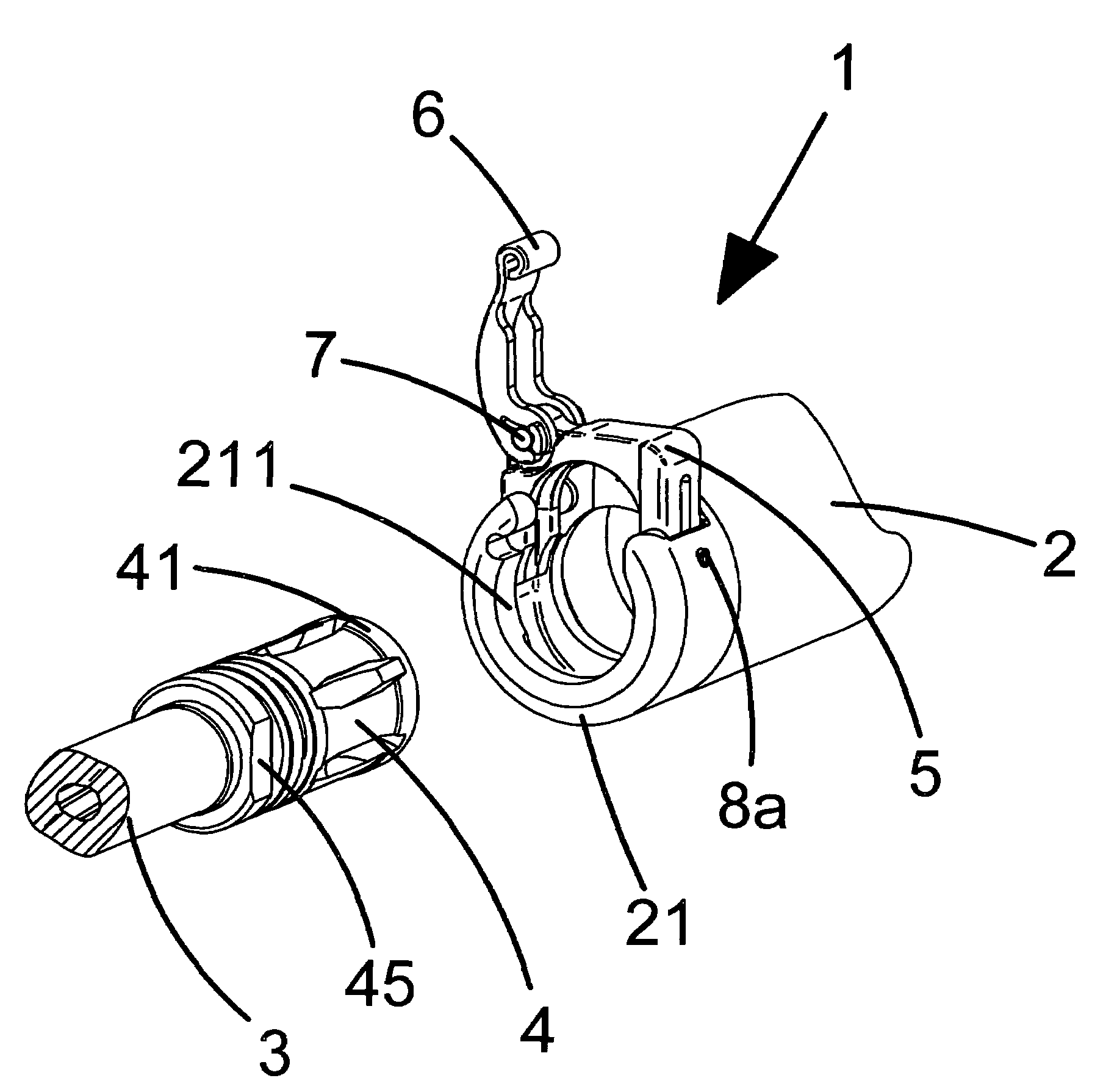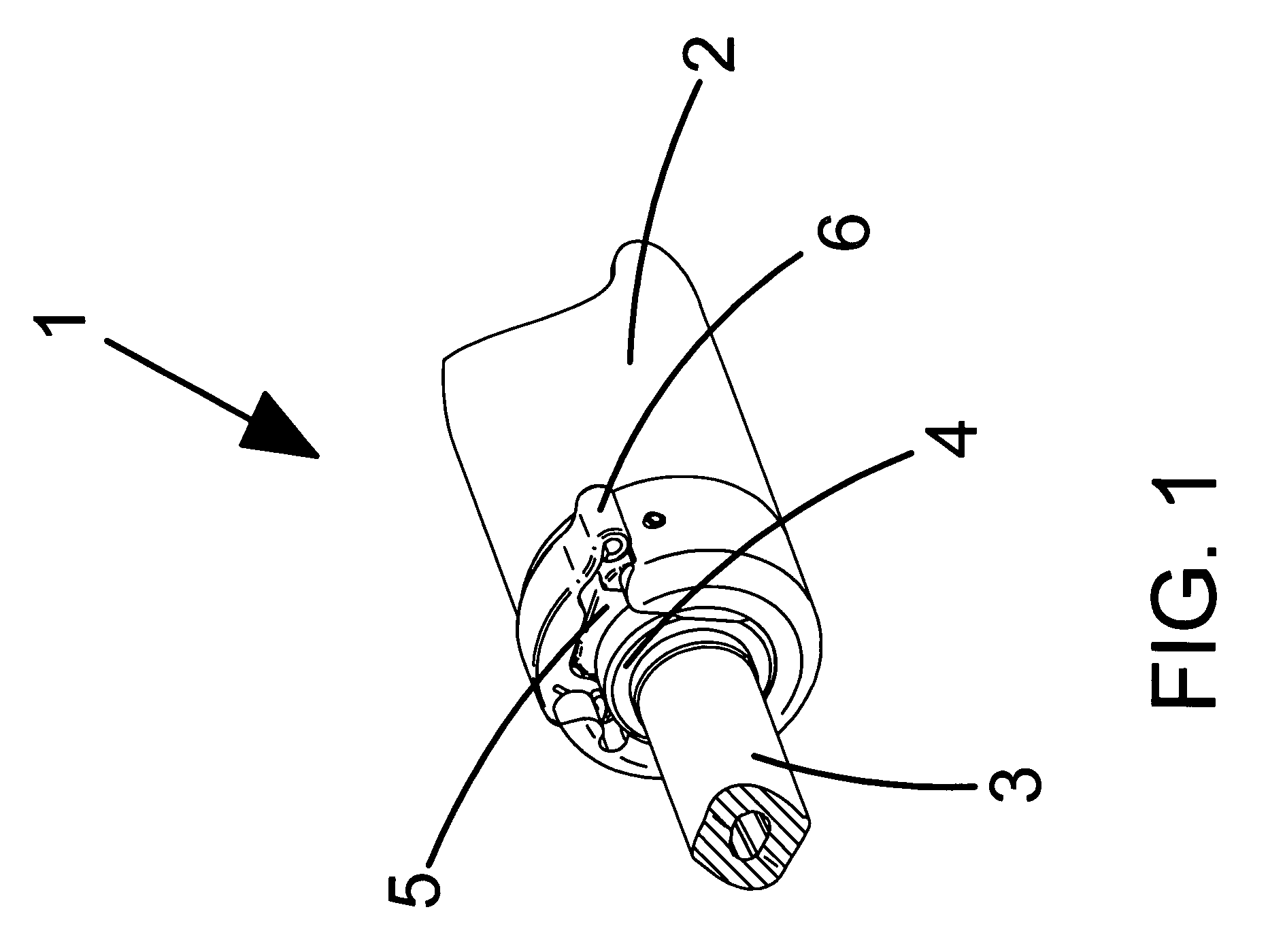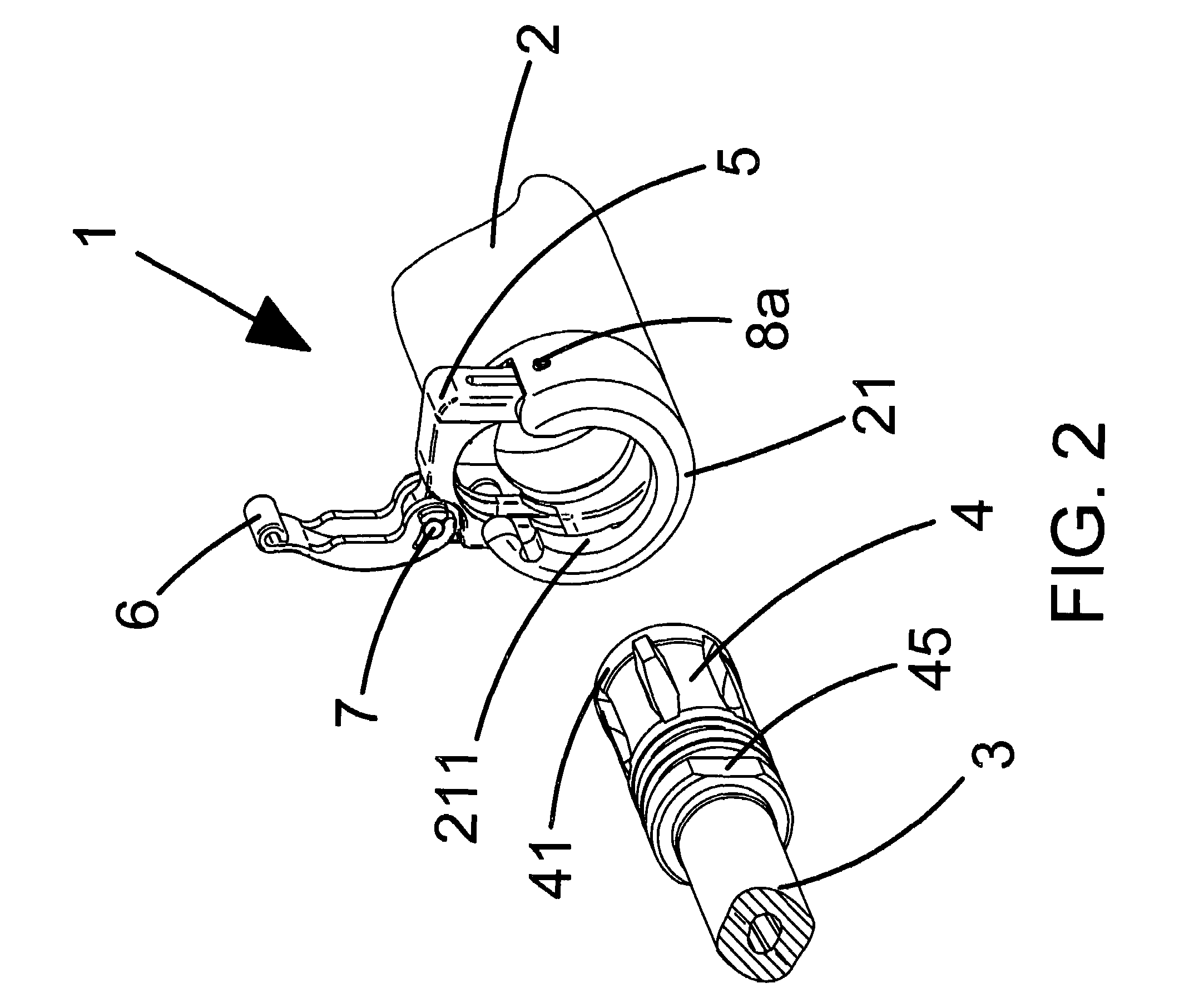Latch for suppressor
a technology for latching suppressors and sound suppressors, which is applied in the direction of muzzle attachment, weapon components, weapons, etc., can solve the problems of excessive steps or movements to attach/detach, poor support and insufficient bearing surfaces of the mount, etc., to enhance the sound reduction potential of the suppressor, tighten the baffle, and limit the amount of rotational movement of the suppressor
- Summary
- Abstract
- Description
- Claims
- Application Information
AI Technical Summary
Benefits of technology
Problems solved by technology
Method used
Image
Examples
Embodiment Construction
[0032]Referring in detail to FIG. 1 of the drawings, suppressor latch assembly 1 is shown in the fully latched condition. Suppressor body assembly 2 surrounds flash hider 4 which is attached to firearm barrel 3. Primary latch plate 5 is in the fully latched position as is secondary latch 6. In this position flash hider 4 is restrained from withdrawing from suppressor body assembly 2 by primary latch plate 5.
[0033]Referring in detail to FIG. 2 of the drawings, when secondary latch 6 has been rotated approximately ninety degrees about pivot pin 7, primary latch plate 5 can be lifted until latch retaining pins 8a and 8b (see FIG. 3) stops its travel. In this position flash hider 4 can be withdrawn from or seated into suppressor body assembly 2. Rear support 21 of suppressor body assembly 2 contains bore 211 which is of a size to accept outside diameter 41 of flash hider 4. Wrench flat 45 on flash hider 4 is intended to be mounted vertically in relation to the firearm upon which it is m...
PUM
 Login to View More
Login to View More Abstract
Description
Claims
Application Information
 Login to View More
Login to View More - R&D
- Intellectual Property
- Life Sciences
- Materials
- Tech Scout
- Unparalleled Data Quality
- Higher Quality Content
- 60% Fewer Hallucinations
Browse by: Latest US Patents, China's latest patents, Technical Efficacy Thesaurus, Application Domain, Technology Topic, Popular Technical Reports.
© 2025 PatSnap. All rights reserved.Legal|Privacy policy|Modern Slavery Act Transparency Statement|Sitemap|About US| Contact US: help@patsnap.com



